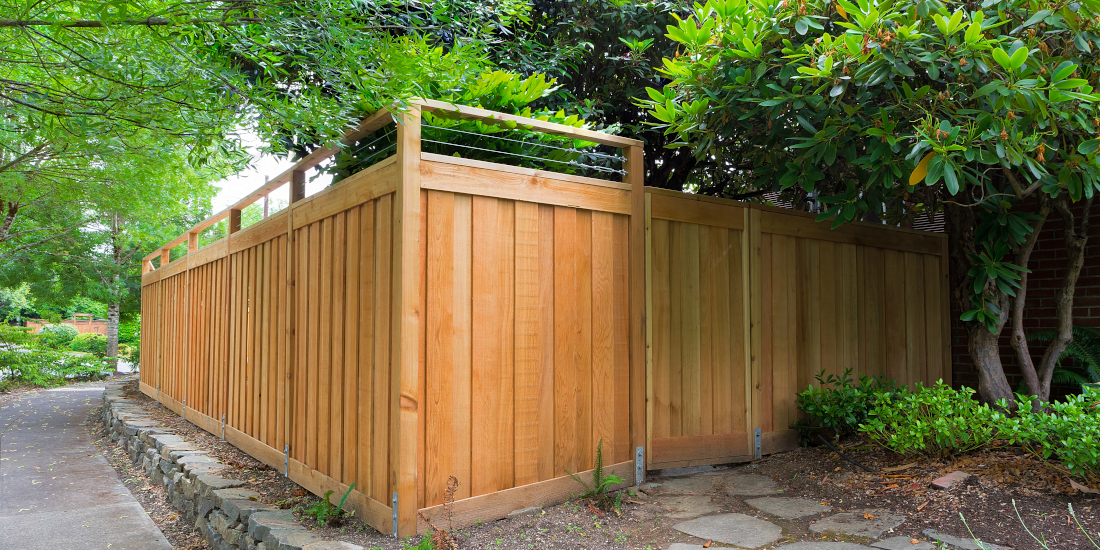
Q: My wood fence is moldy and some of the boards are loose as a result of moisture around the base. I’ve also noticed some sagging. I pressure washed and cleared the weeds around the base to prevent further rotting. Should I repair just the parts that are in bad shape or consider replacing the entire fence?
A: Whether you should repair or completely replace your fence will depend on a few factors, such as the type of wood used, how severe the decay is, if the rot is a result of an infestation, and how much of the fence is leaning or uneven. There’s a chance the smaller sections can be salvaged, but larger sections may need to be replaced. Proper maintenance of any fence is important.
As spring progresses and are spending more time prepping the yard for warmer weather, now is the perfect time to perform maintenance on your wood fence. While there are a variety types of wood used in fencing, cedar is traditional type in the Northwest. It has the longest lifespan compared to other wood types, lasting 15 to 30 years, compared to spruce and pine, which vary from a four- to 12-year lifespan. The key to keeping your fence in tip-top condition and ensuring it lasts its full lifespan is proper upkeep and maintenance. Depending on the fence design, panels typically last longer than posts, since panels shouldn’t touch the ground.
Like all things, a wooden fence requires routine maintenance to keep it looking great and doing its job, whether that’s giving your patio privacy or providing clear property lines. If the bases of your posts are rotting, then they more than likely were neglected for too long and became buried in weeds and soil, making the area a breeding ground for moisture.
First and foremost, your fence should be cleaned and sealed or painted every few years to avoid rot and insect damage. This preventative upkeep will help extend the life of the panels and posts. If your fence surrounds a small space, then it can probably be washed by hand, but in most cases you’ll want to use a pressure washer. Remember to use a low setting when pressure washing a wood fence to prevent damage. After cleaning, apply a stain to maintain your fence’s durability, prevent weather-related rot, and increase its lifespan.
Here are some common issues you could see over time that may indicate it’s time to replace your fence:
Discoloration
Since we live in a region that sees a lot of rain, one of the first signs of trouble you’ll probably encounter are yellow or gray stains on your fence, which means you might have a mold problem that could lead to wood rot. Cedar and pressure-treated wood are more resistant to rot than others. If you choose to replace your fence, you may want to consider types that are less vulnerable to issues like mold and insect damage.
Broken Boards
If a board has become detached from the post, this is a clear sign that the fence needs to be replaced. Obviously, the broken board affects your fence’s appearance, but if you leave the issue unresolved you risk compromising the structural integrity of the entire fence. Although one or two loose/broken boards may not seem like a lot, even a small amount of deterioration can collapse of a larger portion of the fence.
Leaning or Sagging
Another sign that your fence needs to be replaced is visible leaning. This could be from plant overgrowth or another factor weakening the fence posts. In this case, there isn’t a simple fix. This, too, can eventually lead to more warped and broken boards.
Repair or Replace?
Fences are long-lasting and with the proper upkeep can stay in wonderful shape for many years. Over time, problems due to age and wear and tear should be addressed. In some cases, with minor damage, you may be able to replace only the affected parts of the fence. However, it’s important to keep in mind that over time the long-term costs could add up if you end up spending more time and money to repair the same sections repeatedly.
If your fence is showing signs of damage, contact a local fence company to evaluate the condition of the wood and help you find a solution. One resource is the Master Builders Association, where you can search for a variety of member types for your specific location at mbaks.com/find-a-member.
Liz Humphrey is the marketing communications manager at the Master Builders Association of King and Snohomish Counties (MBAKS). If you have a home improvement, remodeling, or residential homebuilding question you’d like answered by one of MBAKS’ more than 2,600 members, write to homework@mbaks.com.